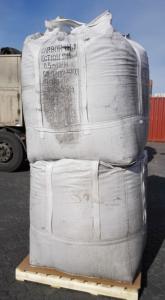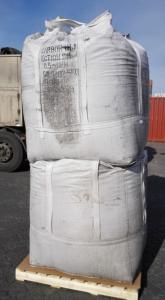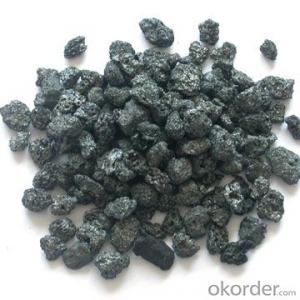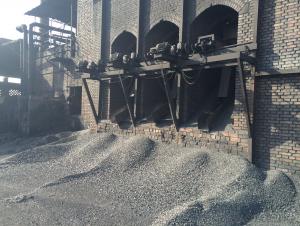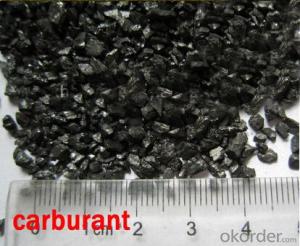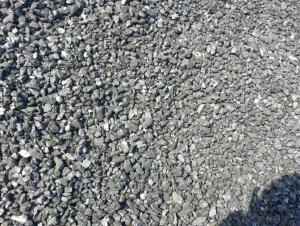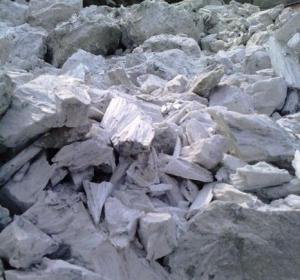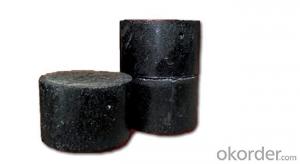Calcined Petroleum Coke FC98%-FC99% Originated in China
- Loading Port:
- Tianjin
- Payment Terms:
- TT or LC
- Min Order Qty:
- 20 m.t.
- Supply Capability:
- 1500 m.t./month
OKorder Service Pledge
OKorder Financial Service
You Might Also Like
Packaging & Delivery
| Packaging Detail: | 50kg/bag 100kg/bag 1000kg/bag Or according with client need to do |
| Delivery Detail: | 2 weeks |
Specifications
Calcined Petroleum Coke FC98%-FC99% Originated in China
Petroleum coke products can be divided into needle coke, sponge coke, projectile coke and coke breeze four kinds.
Calcined Petroleum Coke
F.C.: 98.5%MIN
ASH: 0.8% MAX
V.M.: 0.7%MAX
S:0.5%MAX
Moisture: 0.5%MAX
Structure
Calcined Petroleum Coke FC98%-FC99% Originated in China
Shape: granule
Dimensions: 0-1mm, 1-5mm, 1-6mm, 2-8mm, etc
Product Type: Carbon Additive
C Content (%): 98-99.5% MIN
Working Temperature: -
S Content (%): 0.5%-0.7%MAX
Ash Content (%): 0.7%MAX
Volatile:0.8%MAX
Moisture: 0.5% MAX
ADVANTAGE: low ash & sulfur
COLOR: Black
Feature
Calcined Petroleum Coke FC98%-FC99% Originated in China
Physics and chemistry performance:
Unit | Index | |||||
No.1 | No.2 | No.3 | ||||
Density | g/cm3 | 2.04 | 2.00 | 2.00 | ||
sulphur content | %≤ | 0.5 | 1.0 | 2.5 | ||
volatility | %≤ | 0.5 | 0.5 | 0.5 | ||
ash content | %≤ | 0.5 | 0.5 | 0.5 | ||
moisture | %≤ | 0.3 | 0.5 | 0.5 | ||
charcoal | %≤ | 98.5 | 98.0 | 98.0 | ||
Image
Calcined Petroleum Coke FC98%-FC99% Originated in China

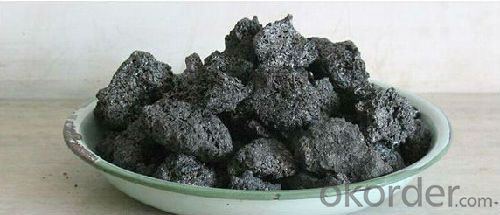
FAQ:
Calcined Petroleum Coke FC98%-FC99% Originated in China
How to classify calcined petroleum coke?
1) According to difference of sulfur content, can be divided into high sulfur coke (sulfur content more than 4%), sulphur in coke sulfur content (2% 4%) and low sulfur coke (sulfur content below 2%).
2) Petroleum coke products can be divided into needle coke, sponge coke, projectile coke and coke breeze four kinds:
3) Needle coke, has obvious needle-like structure and fiber texture, mainly used for steel-making in high power and ultra-high power graphite electrode. As a result of needle coke in sulfur content, ash content, volatile matter and true density and so on have strict quality requirements, so the production process of needle coke and raw materials have special requirements.
4) The sponge coke, high chemical reactivity, low content of impurities, mainly used in the aluminum industry and carbon industry.
5) Focal or spherical coke: the projectile shape is round, diameter 0.6-30 mm, usually from the production of high sulphur, high asphaltic residual oil, can only be used as industrial fuel power generation, cement etc.
6) Coke breeze: fluidized coking process, the fine particles (0.1- 0.4 mm) in diameter, high volatile, high expansion coefficient, cannot be directly used for electrode preparation and carbon industry.
Advantage:
Calcined Petroleum Coke FC98%-FC99% Originated in China
1. High quality and competitive price.
2. Timely delivery.
3. If any item you like. Please contact us.
Your sincere inquiries are typically answered within 24 hours.
- Q:How is carbon used in the production of fuel cells?
- Carbon is used in the production of fuel cells in several ways. One of the main uses of carbon in fuel cells is in the construction of the electrodes. Fuel cells consist of an anode and a cathode, and carbon-based materials such as graphite or carbon paper are commonly used to make these electrodes. These carbon-based materials provide a conductive surface for the electrochemical reactions that occur within the fuel cell. Additionally, carbon is used as a catalyst in fuel cells. Catalysts are substances that speed up chemical reactions without being consumed in the process. In fuel cells, carbon-based catalysts such as platinum or palladium are commonly used to facilitate the reactions that produce electricity. These catalysts allow for more efficient conversion of fuel into electrical energy. Furthermore, carbon is used in the form of carbon nanotubes in the production of fuel cells. Carbon nanotubes possess unique properties such as high surface area and excellent electrical conductivity, which make them ideal for enhancing the performance of fuel cells. They can be used to improve the efficiency of fuel cell reactions by providing a larger surface area for the reactions to take place on. Overall, carbon plays a crucial role in the production of fuel cells by providing the necessary materials for the construction of electrodes, serving as catalysts for the electrochemical reactions, and enhancing the performance of fuel cells through the use of carbon nanotubes.
- Q:What are the different types of carbon-based polymers?
- There are several different types of carbon-based polymers, including polyethylene, polypropylene, polystyrene, polyvinyl chloride (PVC), and polyurethane.
- Q:What are the advantages of carbon-based batteries?
- Carbon-based batteries, such as alkaline batteries, have become a popular choice in various applications due to their numerous advantages. Firstly, their longer shelf life sets them apart from other battery types. They have the ability to retain their charge for extended periods, making them particularly suitable for devices that are infrequently used or for emergency situations. In addition, carbon-based batteries offer a higher energy density, enabling them to store more energy in a compact package. This makes them lightweight and convenient for portable electronic devices like smartphones, laptops, and cameras. Moreover, these batteries have a lower self-discharge rate, meaning they lose less charge over time when not in use. As a result, they can maintain their power for longer periods without the need for frequent recharging or replacement. Furthermore, carbon-based batteries possess a higher discharge rate, allowing them to deliver power quickly when required. This is especially advantageous for devices that demand a sudden burst of energy or for high-drain applications like digital cameras or power tools. Another notable advantage of carbon-based batteries is their cost-effectiveness. They are readily available, inexpensive to produce, and can be easily recycled, thereby reducing their environmental impact. In conclusion, carbon-based batteries offer a range of benefits, including a longer shelf life, higher energy density, lower self-discharge rate, higher discharge rate, cost-effectiveness, and environmental friendliness. These features make them a reliable and efficient choice for a wide array of electronic devices and applications.
- Q:How does carbon affect food production?
- Carbon affects food production in several ways. Firstly, carbon dioxide is a crucial component for photosynthesis, the process by which plants convert sunlight into energy. Increased levels of atmospheric carbon dioxide can potentially enhance crop yields by providing plants with more raw materials for growth. However, excessive carbon emissions are also responsible for climate change, leading to extreme weather events such as droughts, floods, and heatwaves, which can negatively impact food production. Additionally, the burning of fossil fuels releases carbon dioxide, contributing to air pollution that can harm crops and reduce their productivity. Therefore, while carbon is essential for plant growth, the excessive release of carbon emissions can have detrimental effects on food production.
- Q:What are carbon credits?
- The aim of carbon credits is to lessen greenhouse gas emissions and combat climate change by using a market-based mechanism. These credits measure and quantify the reduction, removal, or avoidance of one metric ton of carbon dioxide (or its equivalent) from being released into the atmosphere. The concept behind carbon credits is rooted in the belief that certain activities or projects can offset the emissions caused by other activities. For example, renewable energy projects like wind farms or solar power plants can generate carbon credits by replacing the need for fossil fuel-based electricity generation. Similarly, projects focused on reforestation or afforestation can absorb carbon dioxide from the atmosphere and generate credits. These carbon credits can be purchased and sold in the carbon market, enabling companies or individuals to compensate for their own emissions by buying credits from projects that have successfully reduced or removed carbon dioxide from the atmosphere. This supports environmentally friendly initiatives and contributes to the overall reduction of greenhouse gases. The carbon credit system functions by creating financial incentives for activities that reduce emissions. It encourages businesses to invest in cleaner technologies and practices by assigning a monetary value to the reduction of carbon emissions. This drives the transition to a low-carbon economy and promotes sustainable development. Carbon credits play a crucial role in international efforts to tackle climate change. They are often used as a compliance mechanism for countries or companies to meet their emission reduction targets, as outlined in international agreements like the Kyoto Protocol or the Paris Agreement. Additionally, they contribute to the overall objective of limiting global temperature rise by encouraging emission reductions beyond regulatory requirements. While carbon credits have faced criticism for potentially allowing companies to continue polluting by simply purchasing credits, they remain an important tool in the fight against climate change. They provide economic benefits to sustainable projects and encourage the adoption of cleaner technologies, ultimately helping to mitigate the environmental impact of human activities.
- Q:How do human activities contribute to carbon emissions?
- Human activities contribute to carbon emissions in various ways. One major source is the burning of fossil fuels such as coal, oil, and natural gas for transportation, electricity generation, and industrial processes. Deforestation and land-use changes, mainly for agriculture and urbanization, also release significant amounts of carbon dioxide into the atmosphere. Additionally, industrial processes, including cement production and chemical manufacturing, release greenhouse gases. Overall, our reliance on fossil fuels and unsustainable land management practices are the primary drivers of human-induced carbon emissions.
- Q:Rod box material, there is a kind of material called carbon fiber, who knows this material is good?
- Very good, carbon fiber is made of organic fiber after a series of heat treatment into, inorganic fiber with high performance carbon content is higher than 90%, is a new material with excellent mechanical properties, the intrinsic properties of natural carbon material with, and both the textile fiber soft processing, is a new generation of fiber. Carbon fiber is a new dual-use material for military and civilian use. It is the key material of technology intensive and politically sensitive. It is the only material that does not drop in the high temperature inert environment above 2000 degrees celsius. Carbon fiber steel accounted for less than 1/4, the tensile strength of composite is generally above 3500Mpa, is 7-9 times that of steel, carbon fiber has superior corrosion resistance, it can also be safe and sound in the dissolution of gold and platinum "aqua".
- Q:How is carbon used in the production of cosmetics?
- Cosmetics utilize carbon in diverse ways during their production. A prevalent application of carbon in cosmetics involves its use as a coloring agent. Carbon black, a specific form of carbon, imparts a deep black hue to numerous cosmetic products such as eyeliners, mascaras, and eyeshadows. Nail polishes and lipsticks also incorporate carbon as a colorant. Furthermore, carbon finds application in the creation of activated charcoal, which has gained popularity due to its detoxifying properties. Derived from carbon, activated charcoal features prominently in skincare products like face masks, cleansers, and scrubs. Its ability to absorb excess oil and impurities from the skin makes it a favored ingredient for products targeting oily and acne-prone skin. Moreover, carbon contributes to the manufacturing of exfoliating products. Tiny particles known as microbeads, utilized in facial scrubs and body washes to eliminate dead skin cells, can be crafted from carbon. These microbeads gently exfoliate the skin, leaving it rejuvenated and smooth. Additionally, carbon plays a role in the production of certain cosmetic base materials. Emollients, crucial substances that moisturize and soften the skin, rely on carbon as an essential component. Creams, lotions, and lip balms commonly contain emollients, which enhance their hydrating properties. To summarize, carbon assumes a vital role in cosmetic production. Its versatility as an ingredient contributes to the aesthetics and functionality of various cosmetic formulations, ranging from providing color to enhancing the efficacy of skincare products.
- Q:How does carbon affect the formation of avalanches?
- The formation of avalanches is not directly affected by carbon. Rather, factors such as snowpack stability, slope angle, and weather conditions primarily contribute to their occurrence. Nevertheless, avalanche formation can be indirectly influenced by carbon emissions and climate change, which impact snowpack stability. Increased levels of carbon dioxide in the atmosphere contribute to global warming, consequently affecting the overall climate. This warming leads to changes in precipitation patterns, snowfall amounts, and snowpack characteristics. Higher temperatures can cause rain instead of snow, resulting in a less stable snowpack. Climate change, in addition to altered precipitation patterns, can cause the melting and refreezing of snow. This process creates weak layers within the snowpack. When combined with subsequent snowfall and wind, these weak layers can lead to unstable snowpacks that are prone to avalanches. Moreover, carbon emissions contribute to the overall warming of the planet, which in turn can lead to the retreat of glaciers. Glaciers act as natural barriers and stabilizers in mountainous regions, reducing the likelihood of avalanches. However, as glaciers shrink, they leave behind unstable slopes, thereby increasing the potential for avalanches. It is important to emphasize that while carbon emissions and climate change indirectly influence avalanche formation, they are not the primary or sole cause. Local weather conditions, slope angles, and snowpack stability assessments conducted by avalanche experts play a more immediate role in determining the likelihood of avalanches.
- Q:What are the properties of carbon-based ceramics?
- Carbon-based ceramics, also known as carbon ceramics, are a unique class of materials with a combination of properties that make them highly desirable for various applications. These properties include: 1. High temperature resistance: Carbon-based ceramics exhibit exceptional thermal stability, allowing them to withstand extremely high temperatures without undergoing significant degradation or structural changes. This property makes them ideal for use in high-temperature environments such as aerospace components, brake systems, and heat shields. 2. Low density: Carbon ceramics are characterized by their low density, which contributes to their lightweight nature. This property is advantageous in applications where weight reduction is critical, such as in the automotive and aerospace industries, as it can enhance fuel efficiency and improve overall performance. 3. High hardness and wear resistance: Carbon-based ceramics possess exceptional hardness and wear resistance, making them highly durable and capable of withstanding abrasive forces. This property makes them suitable for use in cutting tools, bearings, and other applications where resistance to wear and erosion is required. 4. Excellent chemical resistance: Carbon ceramics are known for their excellent chemical resistance, which allows them to resist corrosion and degradation when exposed to various aggressive chemical environments. This property makes them valuable in chemical processing, semiconductor manufacturing, and other industries where resistance to chemical attack is crucial. 5. Good electrical conductivity: Unlike traditional ceramics, carbon-based ceramics exhibit good electrical conductivity due to the presence of carbon in their composition. This property makes them useful in applications that require both thermal insulation and electrical conductivity, such as heating elements, electrodes, and electronic components. 6. Tailorable properties: Carbon ceramics offer the advantage of being able to tailor their properties to specific requirements by varying the composition and processing methods. By adjusting factors such as carbon content, porosity, and microstructure, the mechanical, thermal, and electrical properties of carbon ceramics can be customized to meet specific application needs. In summary, carbon-based ceramics possess a unique combination of properties, including high temperature resistance, low density, high hardness, excellent chemical resistance, good electrical conductivity, and the ability to tailor their properties. These properties make them valuable materials in a wide range of industries, including aerospace, automotive, chemical processing, and electronics.
1. Manufacturer Overview |
|
|---|---|
| Location | |
| Year Established | |
| Annual Output Value | |
| Main Markets | |
| Company Certifications | |
2. Manufacturer Certificates |
|
|---|---|
| a) Certification Name | |
| Range | |
| Reference | |
| Validity Period | |
3. Manufacturer Capability |
|
|---|---|
| a)Trade Capacity | |
| Nearest Port | |
| Export Percentage | |
| No.of Employees in Trade Department | |
| Language Spoken: | |
| b)Factory Information | |
| Factory Size: | |
| No. of Production Lines | |
| Contract Manufacturing | |
| Product Price Range | |
Send your message to us
Calcined Petroleum Coke FC98%-FC99% Originated in China
- Loading Port:
- Tianjin
- Payment Terms:
- TT or LC
- Min Order Qty:
- 20 m.t.
- Supply Capability:
- 1500 m.t./month
OKorder Service Pledge
OKorder Financial Service
Similar products
New products
Hot products
Hot Searches
Related keywords
